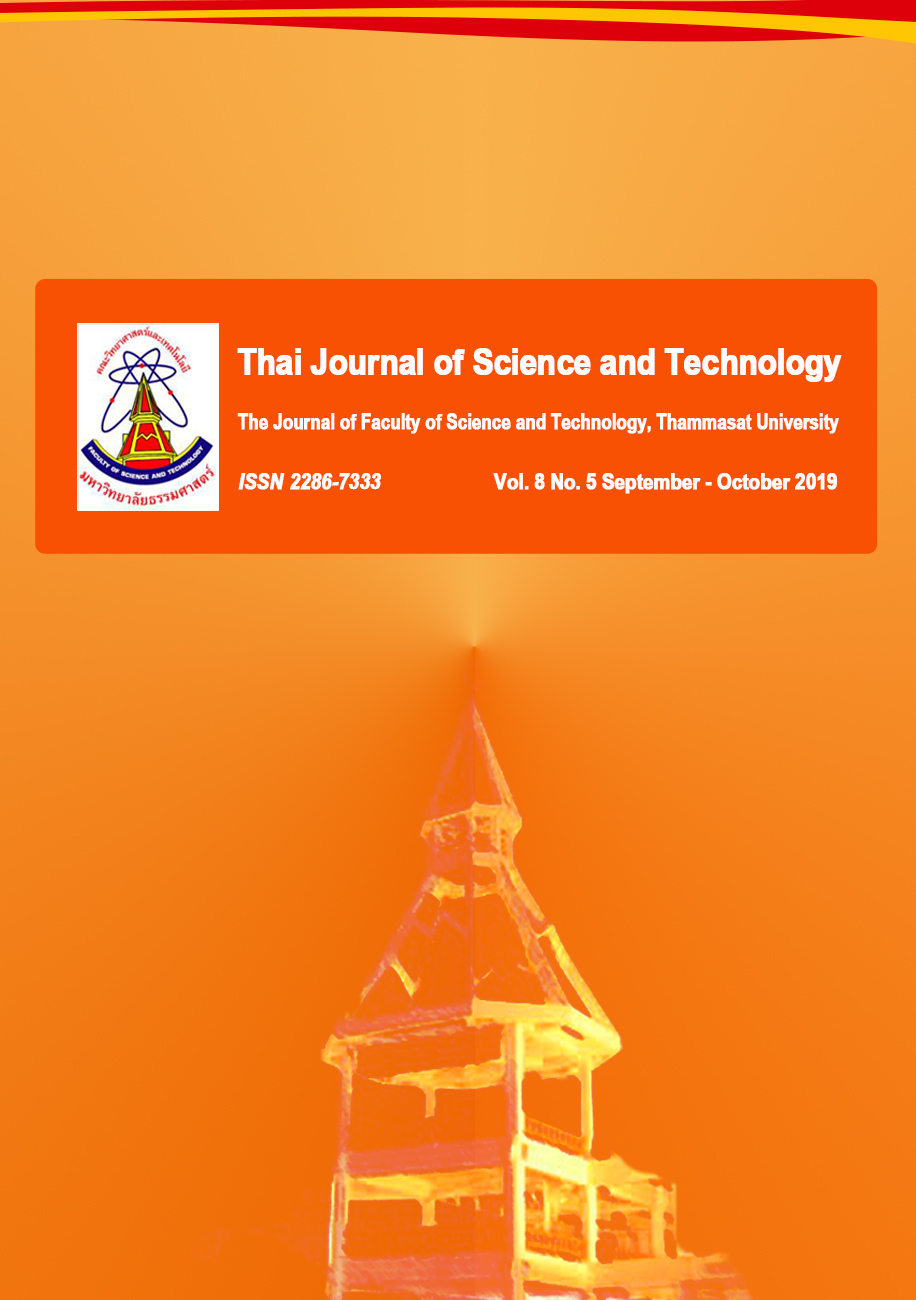ผลของซิลิกอนจากอุตสาหกรรมซีเมนต์และความเค็มต่อการเจริญเติบโต ผลผลิต และการเปลี่ยนแปลงทางสรีรวิทยาของข้าวพันธุ์หอมธรรมศาสตร์
Main Article Content
Abstract
Abstract
The study on effect of silicon from cement industry and salinity applied into soil on growth and yield of Hom Thammasat rice variety was conducted in Factorial in CRD. The study factors were (1) level of silicon from cement industry consisting of 5 levels; 0, 200, 400, 600 and 800 kg/rai and (2) different levels of NaCl concentration consisting of 4 levels; 0, 25, 50 and 100 mmol/L. From the experiment, the results found that the increased level of Na concentration affected the plant growth (plant height, tiller number, root dry weight and shoot dry weight), the physiological response (photosynthetic rate, transpiration rate and stomatal conductance) and the productivity (filled seed, unfilled seed and seed yield per plant) to be decreased significantly. In addition, it was also found that the levels of silicon concentration showed no significant effect on the plant growth (plant height, tiller number, root dry weight and shoot dry weight). However, the level of silicon at 400 kg/rai increased the number of filled seed and decreased the number of unfilled seed significantly.
Keywords: growth; Hom Thammasat rice variety; physiological change; salinity; silicon; yield
Article Details
บทความที่ได้รับการตีพิมพ์เป็นลิขสิทธิ์ของคณะวิทยาศาสตร์และเทคโนโลยี มหาวิทยาลัยธรรมศาสตร์ ข้อความที่ปรากฏในแต่ละเรื่องของวารสารเล่มนี้เป็นเพียงความเห็นส่วนตัวของผู้เขียน ไม่มีความเกี่ยวข้องกับคณะวิทยาศาสตร์และเทคโนโลยี หรือคณาจารย์ท่านอื่นในมหาวิทยาลัยธรรมศาสตร์ ผู้เขียนต้องยืนยันว่าความรับผิดชอบต่อทุกข้อความที่นำเสนอไว้ในบทความของตน หากมีข้อผิดพลาดหรือความไม่ถูกต้องใด ๆ
References
เวธนี วัฒนเดชเสรี, สมชาย ชคตระการ, พักตร์เพ็ญ ภูมิพันธ์ และพฤกษ์ ชุติมานุกูล, 2562, ผลของซิลิกอนจากอุตสาหกรรมซีเมนต์ต่อการเจริญเติบโตและผลผลิตของข้าวพันธุ์ปทุมธานี 1 ภายใต้ระดับการให้น้ำที่แตกต่างกัน, Thai J. Sci. Technol. 8(1): 31-42.
อรุณี ยูวะนิยม, 2546, การจัดการแก้ไขปัญหาดินเค็ม, เอกสารวิชาการ, กลุ่มวิจัยและพัฒนาการจัดการดินเค็ม สำนักวิจัยและพัฒนาการจัด การที่ดิน กรมพัฒนาที่ดิน, กรุงเทพฯม 101 น.
อรอนงค์ นัยวิกุล, 2547, ข้าว : วิทยาศาสตร์และเทคโนโลยี, พิมพ์ครั้งที่ 1, มหาวิทยาลัย เกษตรศาสตร์, กรุงเทพฯ, 366 น.
Cha-umi, S., Supaibulwattana, K. and Kirdmanee, C., 2009, Comparative effects of salt stress and extreme pH stress combined on glycinebetaine accumulation, photosynthe tic abilities and growth characters of two rice genotypes, Rice Science. 16: 274-282.
Dongsansuk, A., Lontom, W., Wannapat, S. and Theerakulpisut, P., 2013, The performance of PSII efficiency and growth response to salt stress in three rice varieties differing in salt tolerance, Agric. Sci. J. 44: 639-647.
Epstein, E., 1999, Silicon, Annu. Rev. Plant Physiol. Plant Mol. Biol. 50: 641-664.
Hanson, A.D., Rathinnasabapathi, B., Rivoal, J., Burnet, M., Dillon, M.O. and Gage, D.A., 1994, Osmoprotective compounds in the Plumbaginaceae: A natural experiment in metabolic engineering of stress tolerance, Proc. Nat. Acad. Sci. USA. 91: 306-310.
Inanaga, S., Higuchi, Y. and Chishaki, N., 2002, Effect of silicon application on reproductive growth of rice plant, Soil Sci. Nutr. 48: 341-345.
Khatun, S. and Flowers, T.J., 1995, Effects of salinity on seed set in rice, Plant Cell Environ. 18, 61-67.
Tuna, A.L., Kaya, C., Higgs, D., Murillo-Amador, B., Aydemir, S. and Girgin, A.R., 2008, Silicon improves salinity tolerance in wheat plants, Environ. Exp. Bot. 62: 10-16.


